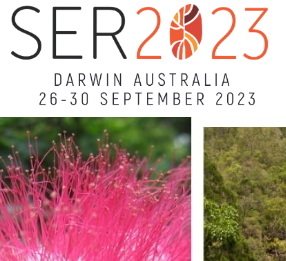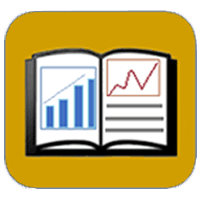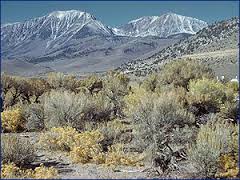Restoration
View factsheet.
Scientists identified the most pollinator-friendly plants to include in seed mixes for use in restoration projects in the Northern Rockies.
Presentation recordings.
Description: This meeting is a time to check in with our friends and colleagues to see what’s new and where progress has been made in ecological restoration and information exchange among practitioners, researchers, and the public in the Great Basin. Please plan to join us for a single day virtual meeting. The meeting will be kicked off by a keynote from Alison Agneray, BLM. The meeting will include a GB SER business discussion and 10 talks by students, faculty, and agency researchers.
Presentations included the following topics.
Building a restoration network
Restoration in the face of climate extremes
Seed coatings to break dormancy, improve seed flow
Threats of human population growth
Invasion resistance
Establishment in sagebrush
Climate-adjusted provenancing
Non-target herbicide effects
Western forbs
Conference website.
SER2023 will held in person on 26-30 September 2023 in Darwin, Australia with additional virtual content delivery in the Western Hemisphere time zone during the week of 6 November 2023. The 10th World Conference on Ecological Restoration will focus on the important, and often neglected connection between culture and nature, including the role of restoration in enhancing and rebuilding that connection.
View report.
This report examines the needs for native plant restoration and other activities, provides recommendations for improving the reliability, predictability, and performance of the native seed supply, and presents an ambitious agenda for action. An Assessment of Native Seed Needs and the Capacity for Their Supply considers the various challenges facing our natural landscapes and calls for a coordinated public-private effort to scale-up and secure a cost-effective national native seed supply.
View article.
Thus, to understand the effects of removing contemporary grazing, we compared contemporary grazed areas to long-term (+10 yrs.) grazing exclusion areas in three common Wyoming big sagebrush community types: intact, degraded, and exotic annual grass-dominated types. Plant community characteristics (cover, density, diversity, richness, dissimilarity) were measured in 2020 and 2021 in five grazed and grazing excluded areas within each community type. Most plant community characteristics were not influenced by grazing exclusion, suggesting that the removal of contemporary grazing has little effect on Wyoming big sagebrush plant communities. The effect of grazing exclusion on Sandberg bluegrass abundance and litter cover varied among community types, suggesting that grazing exclusion effects slightly varied among community types. In contrast, most plant community characteristics varied among community types and between years, suggesting that grazing management plans need to account for the spatial and temporal variability among Wyoming big sagebrush communities. Furthermore, our results suggest that contemporary grazing exclusion has negligible effects compared to contemporary grazing on plant communities, and that exclusion of contemporary grazing (passive restoration) does not promote the recovery of degraded and annual grass invaded plant communities.
View article.
We compare 2-year recruitment of emergent Pseudoroegneria spicata (bluebunch wheatgrass) seedlings in the sagebrush steppe biome for drill versus broadcast seeding methods across three seeding years, three landscape aspects and two soil types using a 95% confidence interval approach to avoid the penalty of multiplicity. We found drill seeding had 2.7 times greater recruitment of seedlings after 2 years compared with broadcast seeding. However, differences were highly subject to seeding year, aspect and soil type, likely because of soil moisture and temperature variations. Drill seeding had an advantage on clay soils with flat and north aspects (10.1 and 4.6 times greater for drill than broadcast seeding, respectively). In most conditions, drill seeding had greater recruitment than broadcast seeding, though in 2014 on south aspects broadcast seeding had 2.7 times greater recruitment than drill seeding. The results of this study demonstrate a need for restoration plans that account for spatiotemporal variation in seeding success.
The Bureau of Land Management and the Great Basin Fire Science Exchange have partnered to offer the following Restoration of Sagebrush Ecosystems Class, see course flyer.
What: Restoration of Sagebrush Ecosystems Class
Why: Gain foundational knowledge and skills needed to plan, implement, and evaluate management strategies and restoration practices to address threats to sagebrush ecosystems from landscape to local scales.
Who can attend: DOI and Non-DOI Land Management Professionals
When: 3-7 March 2025
Where: Hyatt Place South Reno, NV
How: DOI link Course: Restoration of Sagebrush Ecosystems (doi.gov), non-DOI registration instructions
3/2 – Seed Zones and Adaptive Traits (11 PST/12 MST) – Recording
Setting the landscape for native seed technologies: Balancing the need for wild, adapted native seeds with modifications needed for agricultural production and large-scale seeding – Beth Leger, University of Nevada, Reno
Guiding restoration with seed transfer zones: Concepts and applications – Rob Massatti, USGS
3/3 – Seed Modifications (11 PST/12 MST) – Recording
Application of seed coating technologies for rangeland restoration – Matt Madsen, Brigham Young University
Seed balls and other seed restoration innovations – Elise Gornish, University of Arizona
3/7 – Seed Delivery (*1 PST/2 MST, note the different time) – Recording
Drone seeding technology: A case study – Annabelle Monti, USFS; Maria Mircheva, Sugar Pine Foundation; Lauren Fletcher, Beta-Earth
Robots for microclimate identification and planting – Nichole Barger, TNC
3/9 – Current Perspectives on Seed Technology (11 PST/12 MST) – Recording
Management perspectives: Survey results – Mark Brunson, Utah State University
Managers’ solutions to local seeding challenges: Panel Q&A and discussion – Owen Baughman, TNC; Kevin Gunnell, UDNR; Erik Kriwox, Tony Owens, and Michael McCampbell, BLM
View article.
Within a common garden, 69 populations from diverse seed sources and 13 taxonomic varieties were evaluated for 17 phenological, morphological, and production traits in 2016 and 2017. Analyses of variance showed taxonomic varieties and seed source locations differed for all plant traits. Linear correlation revealed source locations with warmer mean temperature and more precipitation generally had later phenology, larger umbels, more leaf area, higher leaf dry weight, and more seed and shoot dry weight production. Canonical correlation strongly linked seed source climates at source locations with plant traits evaluated in the common garden, suggesting climate-driven adaptive evolution. Canonical variates 1 and 2, explaining 60% of the variation, were used to develop regression models that predicted their values from climate variables across the study area. Using geographic information technology these were mapped into 12 seed zones representing 1.31 million km2 in the Western United States. These zones were designed to provide guidance to practitioners when sourcing sulfur-flower buckwheat for restoration projects. We expect this methodology can be successfully applied to other species to develop seed zones based on adaptive evolution.







